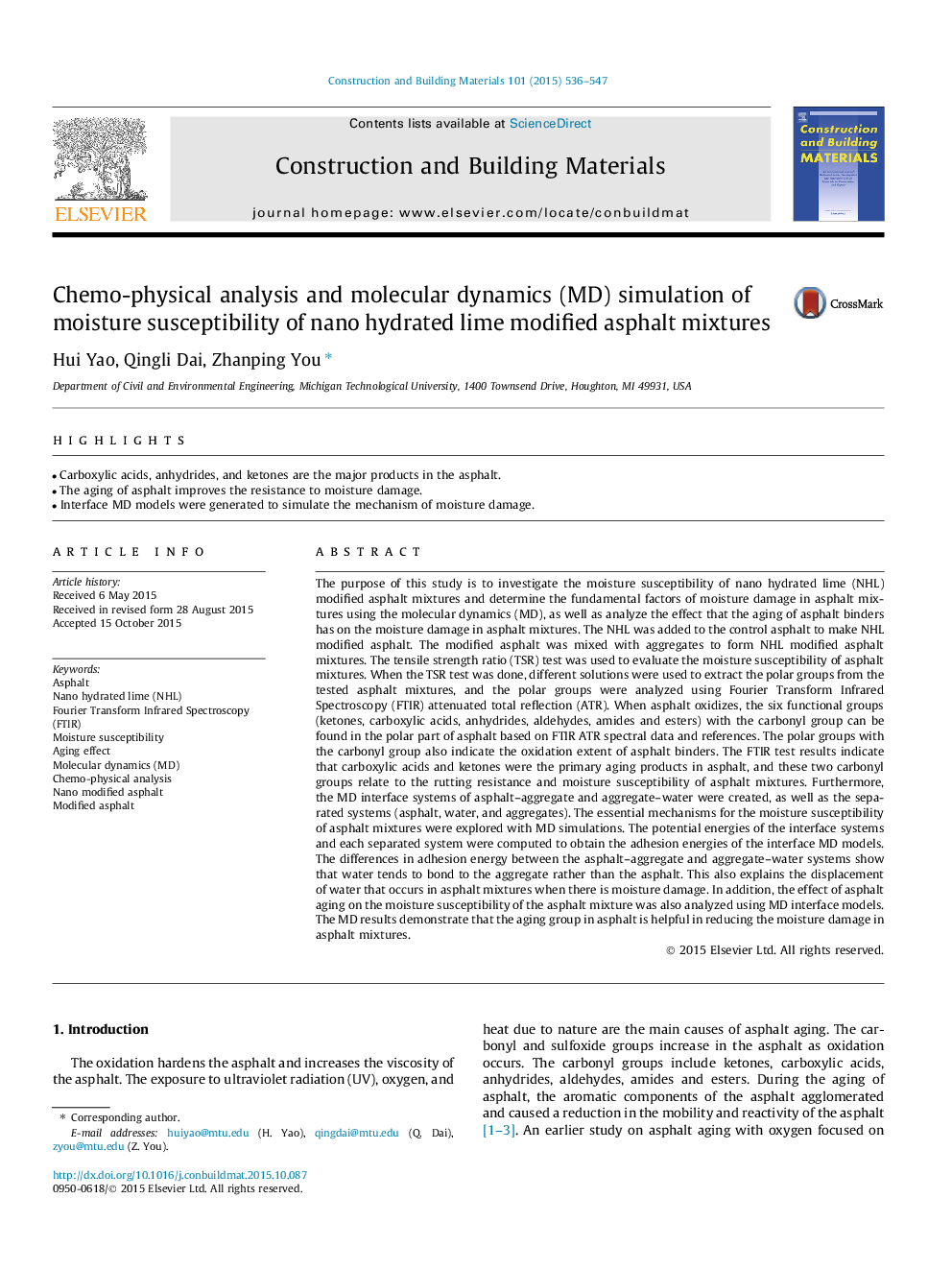| کد مقاله | کد نشریه | سال انتشار | مقاله انگلیسی | نسخه تمام متن |
|---|---|---|---|---|
| 256386 | 503549 | 2015 | 12 صفحه PDF | دانلود رایگان |

• Carboxylic acids, anhydrides, and ketones are the major products in the asphalt.
• The aging of asphalt improves the resistance to moisture damage.
• Interface MD models were generated to simulate the mechanism of moisture damage.
The purpose of this study is to investigate the moisture susceptibility of nano hydrated lime (NHL) modified asphalt mixtures and determine the fundamental factors of moisture damage in asphalt mixtures using the molecular dynamics (MD), as well as analyze the effect that the aging of asphalt binders has on the moisture damage in asphalt mixtures. The NHL was added to the control asphalt to make NHL modified asphalt. The modified asphalt was mixed with aggregates to form NHL modified asphalt mixtures. The tensile strength ratio (TSR) test was used to evaluate the moisture susceptibility of asphalt mixtures. When the TSR test was done, different solutions were used to extract the polar groups from the tested asphalt mixtures, and the polar groups were analyzed using Fourier Transform Infrared Spectroscopy (FTIR) attenuated total reflection (ATR). When asphalt oxidizes, the six functional groups (ketones, carboxylic acids, anhydrides, aldehydes, amides and esters) with the carbonyl group can be found in the polar part of asphalt based on FTIR ATR spectral data and references. The polar groups with the carbonyl group also indicate the oxidation extent of asphalt binders. The FTIR test results indicate that carboxylic acids and ketones were the primary aging products in asphalt, and these two carbonyl groups relate to the rutting resistance and moisture susceptibility of asphalt mixtures. Furthermore, the MD interface systems of asphalt–aggregate and aggregate–water were created, as well as the separated systems (asphalt, water, and aggregates). The essential mechanisms for the moisture susceptibility of asphalt mixtures were explored with MD simulations. The potential energies of the interface systems and each separated system were computed to obtain the adhesion energies of the interface MD models. The differences in adhesion energy between the asphalt–aggregate and aggregate–water systems show that water tends to bond to the aggregate rather than the asphalt. This also explains the displacement of water that occurs in asphalt mixtures when there is moisture damage. In addition, the effect of asphalt aging on the moisture susceptibility of the asphalt mixture was also analyzed using MD interface models. The MD results demonstrate that the aging group in asphalt is helpful in reducing the moisture damage in asphalt mixtures.
Journal: Construction and Building Materials - Volume 101, Part 1, 30 December 2015, Pages 536–547